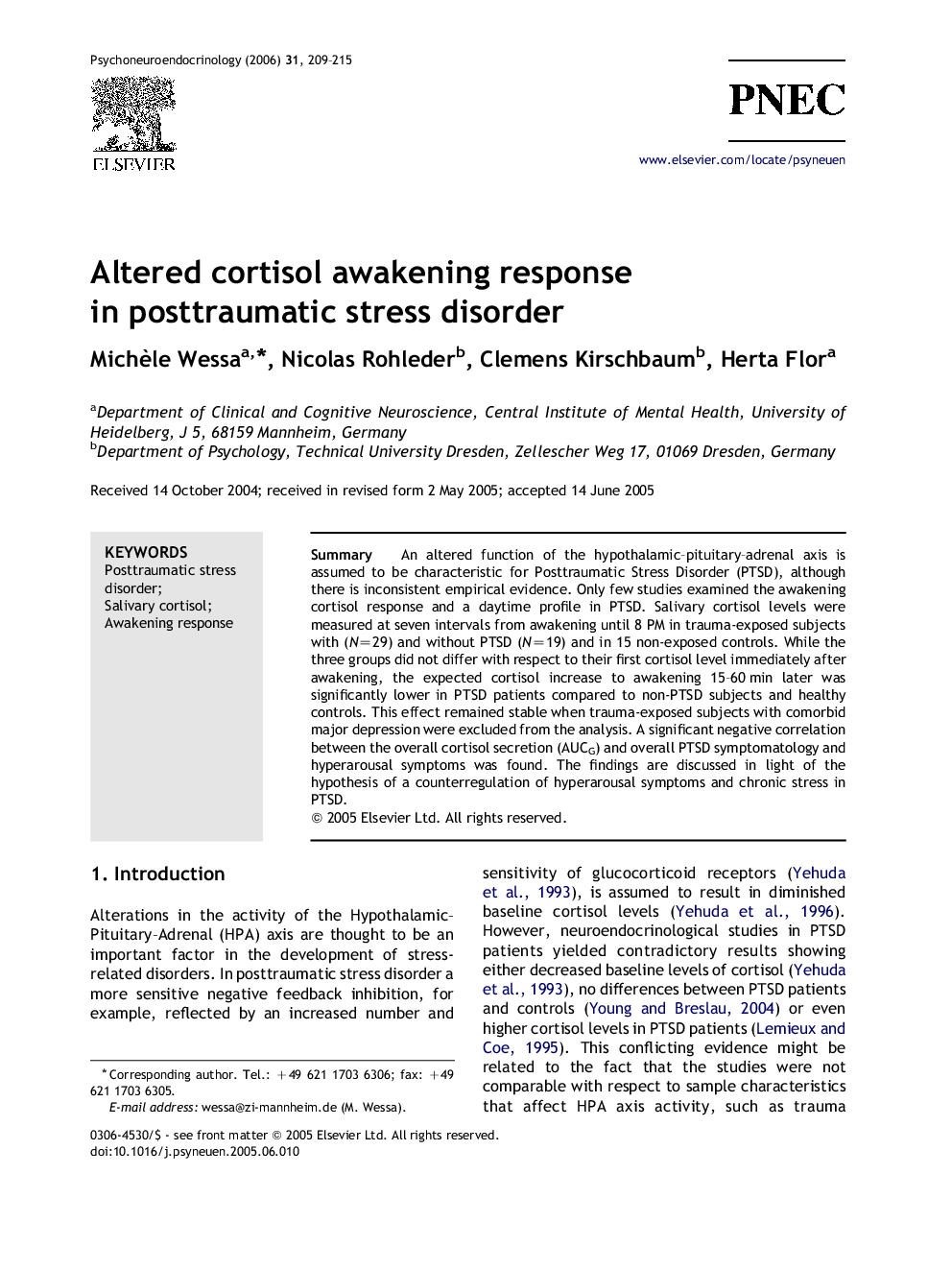| Article ID | Journal | Published Year | Pages | File Type |
|---|---|---|---|---|
| 337286 | Psychoneuroendocrinology | 2006 | 7 Pages |
SummaryAn altered function of the hypothalamic–pituitary–adrenal axis is assumed to be characteristic for Posttraumatic Stress Disorder (PTSD), although there is inconsistent empirical evidence. Only few studies examined the awakening cortisol response and a daytime profile in PTSD. Salivary cortisol levels were measured at seven intervals from awakening until 8 PM in trauma-exposed subjects with (N=29) and without PTSD (N=19) and in 15 non-exposed controls. While the three groups did not differ with respect to their first cortisol level immediately after awakening, the expected cortisol increase to awakening 15–60 min later was significantly lower in PTSD patients compared to non-PTSD subjects and healthy controls. This effect remained stable when trauma-exposed subjects with comorbid major depression were excluded from the analysis. A significant negative correlation between the overall cortisol secretion (AUCG) and overall PTSD symptomatology and hyperarousal symptoms was found. The findings are discussed in light of the hypothesis of a counterregulation of hyperarousal symptoms and chronic stress in PTSD.
